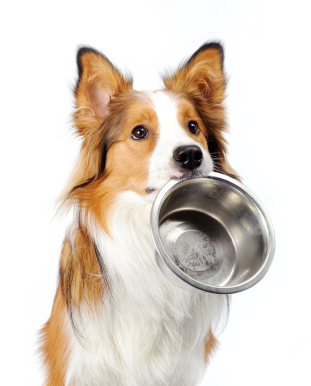How To Make Dog Food Treats
Fellow Dog Owner, If You'd Cry If Your Dog Died, Then You Need To See This!
Discover The Deadly Secret The Dog Food Industry Spends Millions To Make Sure You Never Find Out!

How To Make Dog Food Treats Choosing The Best Dog FoodBrowse any grocery store or commercial dog food How To Make Dog Food Treats store to buy Pet Food and you will agree that trying to select what is the best for your dog is an tiring task. Scanning the shelves of products available, you are bombarded by foods extolling different health benefits as well as a huge range of prices. The pet food market is a multi-billion dollar business and pet food producers are eagerly advertising for each dollar. They are not only advertising us to death, but also developing new services to set up entrance of us. Those products consist of "dryInch, InchprocessedInch, "partially-damp" and wellness specific items for example Incholder", "premiumInch and "premium.So which meals is the best for your pet? Finding that out takes time and study. The simple truth is, the very best dog food is the one that fulfills your canine's nutritional requirements, which differ based upon the pet's grow older, breed, body weight, inherited genes, and amount of activity... and one that fits affordable. It is definitely really worth talking to a veterinarian to get the best guidance and eating plan for your dog. But for those of you that want to consider issues in your hands, you will find detailed below the most important things you will need to know.Dog Food LabelingSusan Powter one thinks of when considering How To Make Dog Food Treats food labels. Remember this iconic infomercial star using the coined phrase InchStop the Madness"? Her gospel about nutrition and the importance of studying the ingredients on the side of the packaging to differentiate the different components and just how each performs its part in overall nutrition, was novel at that time. It would appear that this was the start of the bulk movement to better nutrition, tag studying and selecting products more carefully.With all the recent pet food recalls, countless pet owners have extended this scrutiny to picking your dog meals. But we can not pull from the Leslie Powter gospel for this, simply because dog foods are produced below a number of various standards and regulations, help with through the AAFCO ( The Organization of American Feed Manage Authorities ). You will find special marking requirements that need all dog meals to have certain information on the label. So, in order that we all can create a proper choice for our dogs, we must know how to study and comprehend the dog food tag.The AAFCO puts out an official book, on the yearly basis, detailing special requirements for dog food. Among all the different requirements, they request all dog food producers to adhere to label regulations and should consist of around the package the next: Item Title Guaranteed Evaluation Dietary Adequacy Statement Giving DirectionsThe Name SportWhen shopping for dog food, what's the first thing you look at? The product title, of course. Most people have strolled on the commercial dog food section and observed the product titles leap out as us...calling us. Shown in bold kind and extravagant fonts such descriptions as InchWith PoultryInch, "All Life Stages", InchDuck Entree", "95% Beef", InchOrganic Pet Food". But what do these descriptions truly imply? Is it just fancy marketing? The AAFCO has established rules that determine how ingredients may be used inside a product name.95Percent Rule Applies to most processed pet food that is made up mostly of beef, chicken or seafood. Identifies that at least 95Percent from the pet food should be the called ingredient around the label, not counting drinking water and preservatives added for processing. Counting drinking water, the merchandise should still consist of 70% of the product. If the title includes a combination of components, the 2 mixed must equivalent 95Percent. The guideline only applies to components of pet source, so grains and vegetables can't be included in the 95% guideline. So if the merchandise title was InchMeat and Dark brown GrainInch, the product would still have to consist of 95% beef.25Percent or InchSupperInch Rule This rule applies to numerous processed in addition to dried out dog foods.
How To Make Dog Food Treats

How To Make Dog Food Treats When the How To Make Dog Food Treats called ingredient, or a mix of components, located on the label consists of 25% of the weight (but less than 95Percent) not including drinking water for adequate processing. The name should include a descriptive term, for example "SupperInch, InchPlatter", "Entree", or "Formula". If more than one ingredient is incorporated in the title, they must both complete 25Percent mixed, with each called component equaling or exceeding 3Percent.3% or "WithInch Rule Originally, this rule was meant to apply only to components highlighted around the bundle, outside the item title. It allows manufacturers to highlight small components. The ingredient must have at least 3Percent additional. The rule now enables producers to make use of the word InchWithInch in the item title.Be cautious when reading your dog meals tag simply because "Meat Pet Food" and "Pet Food with MeatInch are not the same. The first must have 95% beef, while the second only needs 3Percent.Flavor Rule A portion of any 1 component How To Make Dog Food Treats isn't required. The term "Flavor" must appear on the label in the exact same font size and colour as the component title. The taste may be the corresponding component, but generally, it's another material for example "mealInch, Inchby-itemInch, a InchinventoryInch or a InchsoupInch.Assured AnalysisThe guaranteed evaluation may be the subsequent element that should be on the pet food tag. It serves as a general guide as to what the percentages of the main nutrients and other items are within the complete make-up of the item. At the minimum, the guaranteed evaluation must contain the next: Minimum Percentage of Proteins Minimal Number of Fat Maximum Percentage of Fiber Optimum Number of DampnessGo ahead and look at your label at this point. View it there? Good. Now, for those who have a can of dog food and a package of dried out pet food at your disposal, check out both labeling. After careful analysis you might like to request, InchHey Erina, I discover when looking at each labeling that the dry dog food has far more nutrients. I thought canned meals had far more protein...what provides?InchKeep this in mind, as I have seen this too, the amounts of protein and other nutrients mentioned around the labels appear to be much less for processed as opposed to dried out, but looks are misleading. The main reason? Variations in dampness content. Canned pet food, typically, consists of 75% drinking water, whilst dried out pet food contains about 10%. So to make a accurate assessment of the nutrient levels, we have to place each types on the same playing field. To get this done, we will be converting both items to dry matter.To convert the vitamins and minerals, we have to dust off our calculators that we last utilized in high school, to be able to do some mathematics. (And you said to your mathematics instructor, "I'll never use this in real life!"), But I digress. Here is the method we will be using:Percent Guarantee divided by Percent Dried out Issue multiplied by 100ExampleIn one part, we have a processed dog food which has a guaranteed evaluation composed of 9% proteins, 6Percent fat, 1.5Percent dietary fiber and 78Percent dampness.Within the other part, there exists a dry pet food which has a guaranteed evaluation composed of 24% proteins, 14.5Percent fat, 4Percent fiber and 10Percent moisture. Dried out few processed: 100 - 78 = 22 Dry few dry: 100 - 10 = 90 Now we can do our calculationsCanned Dog Food Proteins: 9 Or 22 x 100 = 40.9Percent Fat: 6 Or 22 by 100 Equals 27% Fiber: 1.5 / 22 by 100 = 6.8%Dried out Pet Food Proteins: 24 Or 90 x 100 = 26.6% Fat: 14.5 / 90 x 100 Equals 16.1% Fiber: 4 Or 90 by 100 Equals 4.4%So after had been done, have you detected the proteins? The processed dog food really has 14Percent more protein.Nutritional Adequacy DeclarationYou have often seen it around the labels..."TotalInch, "Well balanced", "For Those Lifestages", among others. But exactly how are these claims substantiated? What guidelines are in place to regulate such verbage? The reply is established, once again, by the AAFCO.The Dietary Adequacy Declaration is needed and is among the most important facets of your dog food label. This statement assures us that the item meets all of a pet's dietary requirements. Just how is a pet food substantiated for dietary adequacy? They must use 1 of 2 ways:CalculationsThe method whereby the dog meals contains ingredients developed to supply levels of nutrients that fulfill an established user profileComputations estimate the amount of nutrients either by a typical nutrient content of ingredients or results of laboratory assessments using regular chemical analysis.If it meets the profile established through the AAFCO, the tag will carry a declaration as follows: Inch(Name of item) is formulated to meet the dietary levels set up by the AAFCO (Canine) Meals Nutritional Profiles for (specific existence phase)."Giving Trials The merchandise (or perhaps a comparable product produced by the same organization) has been tested in dogs under strict guidelines and found to provide proper nutrition If it fulfills the profile set through the AAFCO, the label will carry a declaration as follows: InchAnimal feeding assessments utilizing AAFCO procedures substantiate that (title of product) provides total and balanced nutrition for (specific life stage).InchThe Dietary Adequacy Statement will also incorporate a statement about which existence phase(utes) your dog food is ideal for. Two profiles are used. Here is a meaning of every and additional information about other profiles: GrowthOrLactation - An item meant for expanding young puppies, for pregnant canines or breast feeding females. Maintenance - Ideal for any adult, no-recreating dog of normal level of activity, but may not be sufficient for a growing, reproducing, or diligent dog. Conditions like "Older" or InchFormulated for big Breed Adults" indicates the dog food fulfills the requirements for that Upkeep profile, but nothing more. Something that doesn't fit within the two information over should state that "This product is meant for sporadic or additional giving," other than if it's plainly recognized as a treat or treat.Feeding RecommendationsFeeding recommendations are extremely wide, as you would expect. At a minimum, they should include coaching like InchNourish ___ Mugs For each ___ Pounds.Inch But keep in mind that these instructions are very rough estimations. Most people nourish their dogs way too much. Actually, 25Percent of all dog's are obese...leading to problems for example: Diabetes Arthritis Coronary heart and Liver Issues Bladder Most cancersYou need to treat the guidelines as a starting point. Engage with your vet regarding your dog food and how a lot to give. They do know that dietary requirements vary and, by knowing your pet, they will be able to recommend a feeding routine based on several elements such as: Age Body Weight Type Genetics Level Of Activity
(Product search information : 8out of 10based on 50 ratings.30 user reviews.)
Tags : How can I How To Make Dog Food Treats,Blueprint How To Make Dog Food Treats,Handbook How To Make Dog Food Treats,Final How To Make Dog Food Treats,Help for How To Make Dog Food Treats,Recommended How To Make Dog Food Treats,To Learn How To Make Dog Food Treats,To fix How To Make Dog Food Treats,Review How To Make Dog Food Treats,Online How To Make Dog Food Treats
0 comments:
Post a Comment